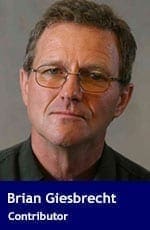 Europe is tearing itself apart over immigration. There are just too many applicants for too few spots.
Europe is tearing itself apart over immigration. There are just too many applicants for too few spots.
Many of the people seeking to come to Europe are from war torn countries like Syria, or from failed states in Africa like Somalia and Libya. Some are genuine asylum seekers, who would be in great danger if sent back to their home countries.
However, the vast majority of these people are economic migrants – people seeking better opportunities.
It’s a sad fact of life that most of the people on this planet don’t live in wealthy and stable countries. Millions of people – maybe billions – would be willing to make great sacrifices to move to rich countries like Germany, the United States and Canada.
It’s also a reality that the wealthy countries couldn’t survive an influx of all of the people who want to be here. Numbers must be limited and immigration must be carefully controlled.
Western Europe now recognizes that it made a great mistake in 2015, during the time of the great Syrian exodus, by simply throwing open its borders to anyone who wanted in.
Europe is not the only part of the world struggling with this difficult problem. One of U.S. President Donald Trump’s highly successful campaign promises was to temporarily ban immigration from certain Muslim countries “until we can figure it out” – the problem to be ‘figured out’ was violent Islamic extremism. Eastern Europe is also taking this approach. It’s virtually impossible for Muslim families to make their homes in Poland or Hungary.
But even more tolerant countries like Italy, which faces the very real prospect of an influx of up to a million economic migrants from a dysfunctional Libya, are struggling to find a solution that’s humane but realistic.
Canada also has problems with economic migration. Tens of thousands of migrants have entered the country illegally by circumventing official border crossings. They know that if they tried to enter at official crossings, they would be turned back into the United States. These people aren’t to blame for trying to improve their lives by taking advantage of Canada’s faulty system, but clearly there’s a problem here.
Which model should Canada look at to solve the problem?
The Trumpian and Eastern European model of refusing to allow Muslim immigrants is a xenophobic and bigoted response that has no place in our country. Canada’s Muslim population, on the whole, is at least as productive, hard working and peaceful as any other demographic group.
Violent Islamic jihadism is certainly a very real problem that immigration screening must address. However, there’s no reason to suppose that newcomers to the country, who have passed all the requirements, will not be productive and peaceful citizens. Tight border control and proper screening will address these issues.
But uncontrolled immigration – like what’s happening in Western Europe and Canada – is also not the way to go.
Instead, Canada should follow the model of a country that’s like us in many ways: Australia. Although economic migrants find Australia just as attractive as they do Canada, Australia has virtually no problem with uncontrolled migration.
Australia makes it clear that undocumented economic migrants – queue jumpers – won’t be admitted to their country. These migrants steer clear of Australia because they know they’ll be turned back if they try to enter.
Canada should copy this approach. We should remember that there are many potential immigrants who have done all their paperwork and are waiting patiently in difficult circumstances for permission to come to our country. Queue jumping is very unfair to these people.
Australia also plans to require new immigrants to accept basic values such as acknowledging that domestic assault, female genital mutilation and ‘honour’ killing are wrong. Backward, harmful customs such as these are wrong regardless of which culture or religion appears to justify them.
Canada does this as well but has no application for illegal migrants who manage to bypass the system by disappearing into the mainstream. The policy should apply to all people wanting to make Canada their home.
Finally, Australia expeditiously deals with asylum claims, and insists that immigrants have skills to support themselves and their families in their new country.
Canada has such requirements for people legally immigrating to Canada but those requirements fall by the wayside for those entering the country illegally. Many illegal migrants simply disappear into the Canadian mainstream while they’re supposedly waiting for a hearing or deportation, and the skills requirement is made irrelevant.
Canada must insist that immigrants don’t become a burden on the public purse, while finding a way to process them all expeditiously, in a fair and humane manner, so illegal immigrants can’t thwart the process. If this means declaring that the entire border is an official crossing, holding immediate oral hearings before special immigration hearing officers, or using the notwithstanding clause of the Canadian Charter of Rights and Freedoms if those measures are found to be unconstitutional, then so be it.
Fairness is essential if the integrity of the system is to be restored.
Here’s how former Australian prime minister John Howard puts it: “My long experience in Australian politics has been that whenever a government is seen to have immigration flows under control, public support for immigration increases; when the reverse occurs, hostility to immigration rises.”
The chief legal impediment to Canada adopting a system like Australia’s is the Singh decision, decided by our Supreme Court in the very early days of the newly-minted Constitution, in 1982. Basically, it insists that everyone coming into the country is entitled to an oral hearing.
The way the case has been interpreted, an illegal immigrant is given a hearing date far into the future. The hearing is conducted by politically-appointed people, who too often have little or no immigration experience.
It’s very unfortunate that the federal government didn’t choose veteran immigration experts to perform this important task. Experienced people do a much better job of expeditiously screening applicants.
Because of the lengthy delays in our inefficient system, the person making the claim too often simply disappears and forgets about hearing dates, or their circumstances change drastically between entry into the country and a hearing date. Or a skilled immigration lawyer drags out proceedings, thwarting the process.
People who enter illegally too often succeed in staying in the country at the expense of potential immigrants who wait in other countries, having complied with all requirements. There’s great unfairness here – meanwhile security threats remain in the country undetected.
We need a system that includes immediate hearings conducted by experienced immigration hearing officers, with the power to separate legitimate asylum seekers from economic migrants. The hearing officers must have the power to prevent people determined to be economic migrants – especially those who are security threats – from entering the country.
Immigrants of all nationalities, ethnicities and religions have made Canada the safe and prosperous country it has become. Controlled borders and fair – but robust – immigration policies will keep it that way.
Brian Giesbrecht is a retired judge and senior fellow with Frontier Centre of Public Policy.
The views, opinions and positions expressed by columnists and contributors are the author’s alone. They do not inherently or expressly reflect the views, opinions and/or positions of our publication.

